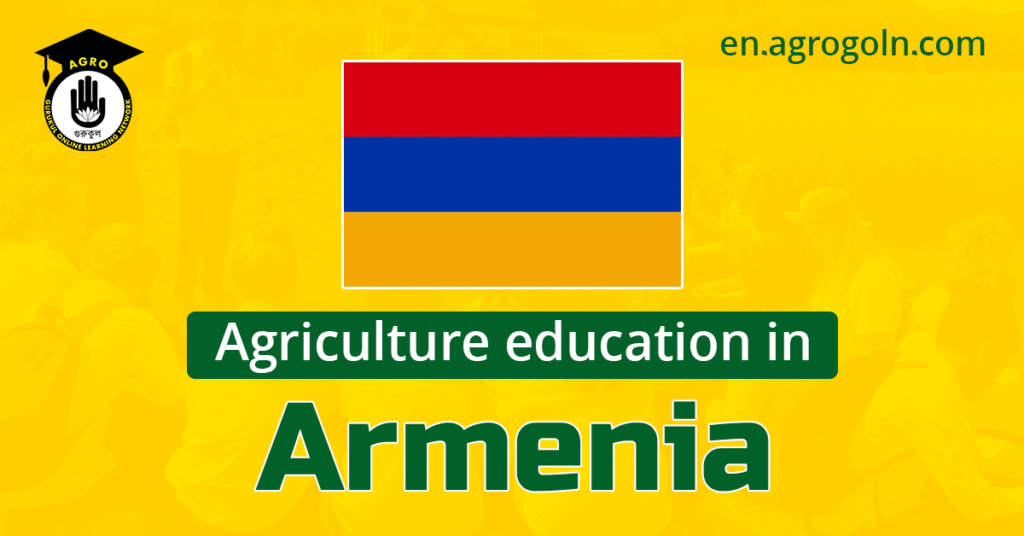Agricultural Education in Armenia: Opportunities, Challenges, and the Road Ahead. Agriculture has been a cornerstone of Armenia’s economy for centuries, and it continues to play a significant role in the country’s economic and social development today. As such, agricultural education is vital for the sustained growth and modernization of this sector. This paper explores the current state of agricultural education in Armenia, its role in supporting the nation’s agricultural industry, the challenges it faces, and potential strategies for its enhancement.
Agricultural Education in Armenia: Opportunities, Challenges, and the Road Ahead
The Importance of Agriculture in Armenia
Armenia, a landlocked country located in the South Caucasus region of Eurasia, boasts diverse climatic conditions that favor a wide range of agricultural activities. With approximately 20% of the country’s GDP coming from agriculture, and almost a third of the population employed in this sector, the importance of agriculture to Armenia’s economy and society is evident.
The country’s primary agricultural products include grains, potatoes, vegetables, and fruits. Additionally, livestock rearing, especially of cattle and sheep, plays a significant role in Armenia’s agricultural economy. Furthermore, Armenia’s rich traditions of viticulture and winemaking continue to the present day, with the country increasingly recognized for its high-quality wines on the international stage.
The State of Agricultural Education in Armenia
The education system in Armenia has long recognized the need to support the agricultural industry. Educational institutions, from secondary schools to universities and vocational schools, offer a variety of programs dedicated to agriculture. These programs aim to provide students with a solid theoretical understanding, as well as practical skills, in a range of agricultural disciplines such as agronomy, viticulture, livestock management, agricultural engineering, and agribusiness.
At the tertiary level, the Armenian National Agrarian University (ANAU), founded in 1929 and located in Yerevan, is the leading institution providing agricultural education. ANAU offers a variety of bachelor’s, master’s, and doctoral programs in agricultural sciences, veterinary medicine, agribusiness, and more. Additionally, several other universities and colleges across the country offer programs and courses related to agriculture.
Challenges in Agricultural Education
Despite the existing infrastructure and the evident commitment to agricultural education in Armenia, the sector faces several challenges. A significant issue is the gap between the curriculum taught in educational institutions and the realities and needs of the agricultural industry. The rapid advances in technology and the evolving market dynamics necessitate a constant update of the educational curriculum, which is not always achieved.
Another challenge is the lack of modern infrastructure and up-to-date learning resources in many institutions. Practical training and hands-on experience are crucial in agricultural education, and many Armenian institutions struggle to provide this due to limited resources.
Furthermore, there is a declining interest among the younger generation in pursuing agricultural education and careers. The perceived lack of profitability and career prospects in agriculture, coupled with the appeal of urban lifestyles and other professional fields, are leading to a decreased inflow of fresh talent into Armenia’s agricultural sector.
The Way Forward
Addressing these challenges requires a multifaceted approach. First, there is a need for an updated and industry-relevant curriculum. Collaboration between educational institutions, government bodies, and the agricultural industry is crucial to ensure that the education provided meets the current and future needs of the industry.
Second, investment in educational infrastructure is critical. This includes not just physical infrastructure like laboratories and training farms, but also resources such as up-to-date textbooks, digital learning tools, and access to the latest research and developments in the field.
Third, efforts must be made to make agricultural education and careers more attractive to the younger generation. This can be achieved by showcasing the potential profitability and growth opportunities in agriculture, promoting the benefits of rural lifestyles, and highlighting the pivotal role that agriculture plays in sustainability and food security.
Finally, increased emphasis on research and innovation in agricultural education is essential. Institutions like ANAU need to be at the forefront of research in agriculture, driving innovation and improvements in the sector.
Conclusion
In conclusion, agricultural education in Armenia has a rich history and a significant role to play in the future of the country’s agricultural industry. While it faces numerous challenges, with the right strategies and efforts, it can overcome these and help propel Armenia’s agriculture to new heights. Enhancing agricultural education is not just about securing the future of an industry; it’s about ensuring food security, promoting sustainable practices, and contributing to the nation’s overall economic and social development. It is an investment in Armenia’s future that is well worth making.
See more:

